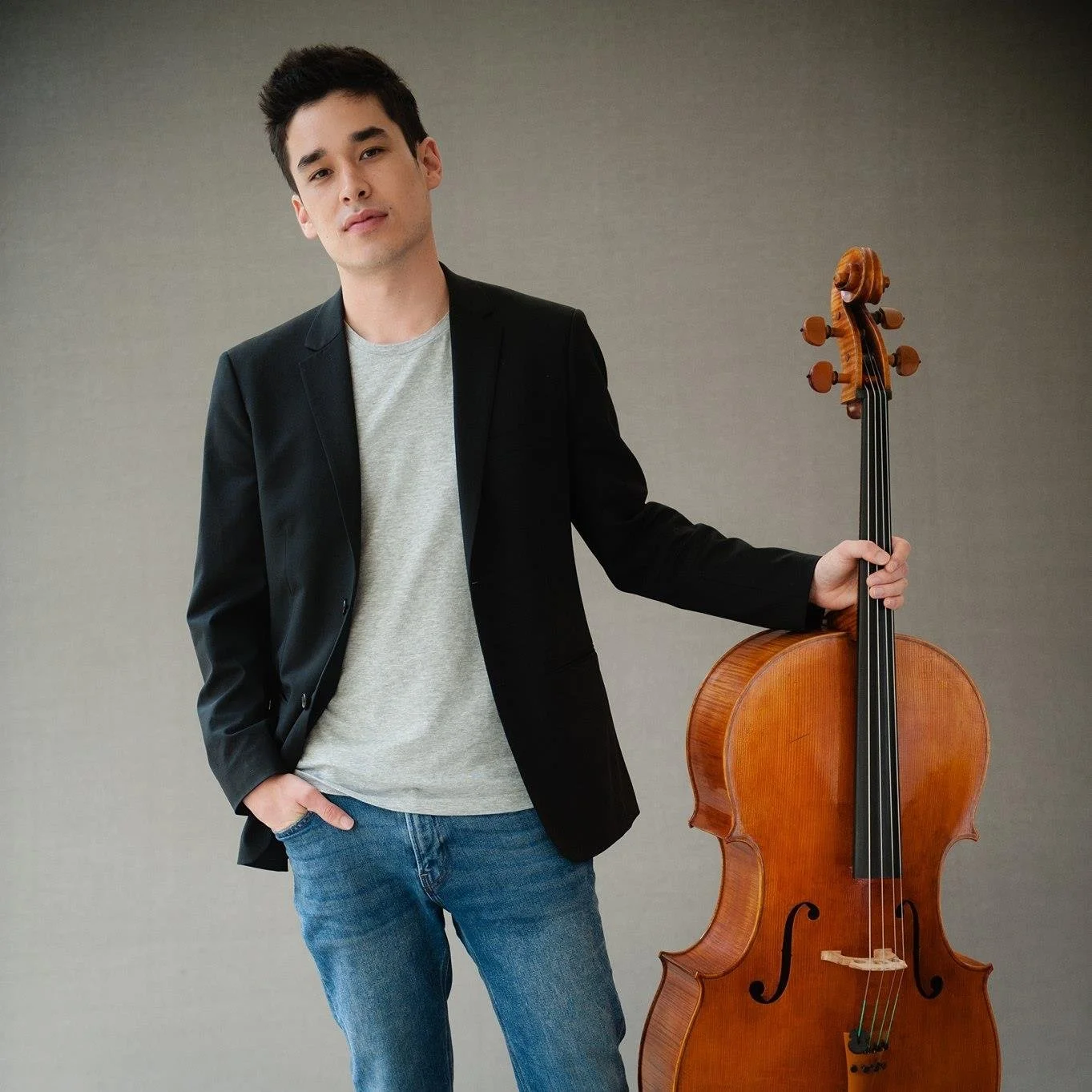Concerto for Cello and Orchestra (1996/1997)
For Chamber Orchestra (or) Wind Ensemble
Chamber Orchestra: 1[1=pic].1.1.1-2.1[1=flüg].0.0-timp-strings (6.5.4.3.1 minimum in players — Solo Cello
Wind Ensemble: 3[1=pic.2=pic.3=pic/afl].1.4[1=Ebcl.2.3=bcl.bcl].1-2.1[1=flüg].0.0-timpo.perc(2) — Solo Cello
Year: 1996 (orchestra); 1997 (wind ensemble)
Duration: 25’
First Performance:
Orchestra Version: 3 May 1996 / Olin Auditorium, Annandale-on-Hudson, New York / Robert La Rue, cello / The American Symphony Chamber Orchestra / Leon Botstein
Wind Ensemble Version: 18 November 1997 / Baylor University Concert Hall, Waco, Texas / Robert La Rue, cello / The Baylor Wind Ensemble / Michael Haithcock
Dedication: “For Robert La Rue.”
Movement Titles: Mesto (9:40) | Allegro scorrevole (5:51) | Lento e largo; Allegro (8:17)
Publisher: E.C. Schirmer | rental
But the Study Score: all-sheetmusic | Front
Richard Narroway p/c: Bo Huang
Program Note:
Hagen conceived of the concerto as a nocturne. The overall form of the concerto is that of a rondo (ABACBA) with the first movement taking the first three sections (ABA) the second the C and the last the closing BA. Of the first movement, Hagen has written, “The entire concerto takes place during a single feverish, sleepless night. The first idea is a tattoo (a signal on a drum summoning soldiers to their quarters at night) heard first in the solo timpani. The second idea is that of a double neighbor figure (a note followed by its upper and lower neighbors, which serves to infuse the harmonies and melodies of the entire piece with the intervals of the second and the ninth. The third idea is a brief sequence of chords first heard as quadruple stops in the solo cello.”
The middle movement (set, according to the composer, at midnight) unfolds a sequence of 12 variations on the piece's three main ideas over a 12-note row which cycles in the manner of a passacaglia.
The final movement returns to, and further develops, the music of the first movement first in a lyrical manner, then as a bustling chaconne.
Selected Reviews:
.. a serious piece, which evokes night visions and dreamlike (sometimes nightmarish) thoughts. The composer has a wonderful sense of instrumental color, and an accessible harmonic language.
— Records International Reviews, Feb 99
...highly crafted, instrumentally colorful, basically tonal, and very listenable... the Concerto for Cello and Wind Ensemble (1997) was recast from different instrumentation for this wind- ensemble recording. The piece was originally written for the present soloist, Robert La Rue. At nearly 24 minutes in three movements, it's the longest piece here. The bulk of the material follows a more introspective path, long-breathed melody with counterpoint, though the second movement returns to the rhythmic drive prevalent in the other pieces. There are some genuinely lovely passages here.
— Robert Kirzinger, Fanfare Magazine, September/October, 1999

